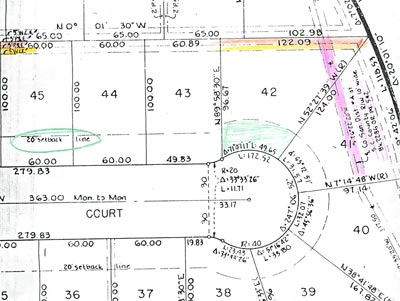With multiple law offices in the Brainerd Lakes Area, a significant portion of our practice is devoted to easements. Clients often come in with their own assumptions of what an easement is and what it entails. The world of easements is as broad as it is complex. Easements can be an incredibly useful tool to resolve disputes or problems either through real estate transactions or litigation. Specifically, an easement can be used to provide access for a driveway or even to a lake. An easement can also be used to preserve wetlands or to protect certain portions of land from development or use. This overview provides a mere snapshot of the concept of easements.
Easement Defined
An easement is defined as the right in the owner of one parcel of land, by reason of such ownership, to use the land of another for a special purpose not inconsistent with a general property right of such owner. The grantor of the easement retains fee title to his or her land. The benefitting party gains the ability to use the grantor’s land for the stated purpose set forth in the easement. In simple terms, an easement provides the right to use another’s land for whatever purpose the easement was created. That use, however, is limited to the specifically described uses in the written document creating the easement. The use may be exclusive to a benefitting party or others may have rights to use it at the same time (non-exclusive). An easement may be perpetual and “run with the land” or not run with the land and be available to only the benefitting party during the benefitting party’s lifetime. An easement can also expire by its own terms or with a deadline. Finally, an easement can be deemed abandoned if not put to its intended use within forty (40) years.
Ambiguous Description of Location
When a real estate attorney is not used to draft the easement the most prevalent issue is not specifically defining the location of the easement through a legal description or the area is defined by the entire lot (blanket easement). In the case of a blanket or undefined easement as to the location, the portion of the land not actually used may be released from the easement or a Court could reform the easement based on evidence of actual use (again, if it is not used at all in a forty year span, the easement could be deemed abandoned).
Negative Easement: Banning Certain Uses
It is even possible, if the relevant parties agree, for example, to use a “negative easement” to prevent the construction of a dock that would obstruct the lake view. A negative easement bans or restricts a particular use on the burdened land. It does not allow the owner of the dominant estate to make some direct use of the burdened land. A negative easement may be used for many reasons including, but not limited to, for light, air, lateral support, views, or even water flow.
Conservation Easements: Restrict Uses of Land
A conservation easement is another type of negative easement, to restrict use of land in a natural form, at the request of government or private landowners. Typically, a conservation easement is used with the goal of preserving natural habitats such as a lake or a stream. A conservation easement is intended to leave certain property in its natural state by preventing development or intense uses. In the case of a lake, certain activities could be restricted along any fragile areas such as the shoreline to improve water quality. More often than not conservation easements are created through the efforts of the responsible government entities. Like all easements, the landowner with the property burdened by the easement still retains fee title in his/her property; however, once granted, the restriction on use must be considered in its valuation.
Again, this merely scratches the surface of easements. There are other types of easements. For example, a prescriptive easement can be established by use of the property if certain legal elements are satisfied.
If you have a property that could use an easement or is already burdened by an easement or, perhaps, benefitted by an easement, it may be prudent to have a discussion with a real estate attorney over the rights and duties involved in the easement. Done properly, easements can ease the use of one’s property and, hopefully, encourage and foster neighborly relationships.

